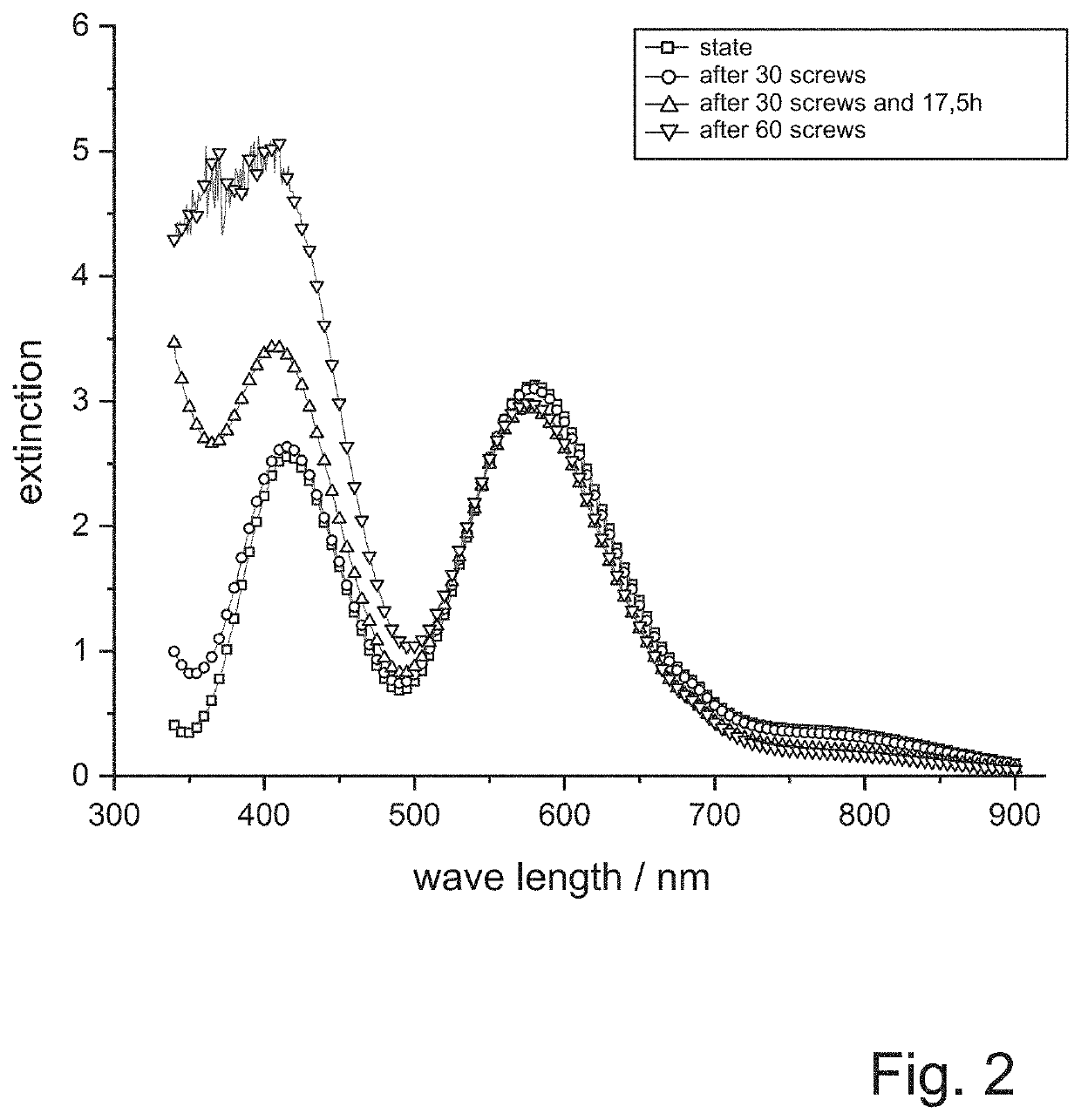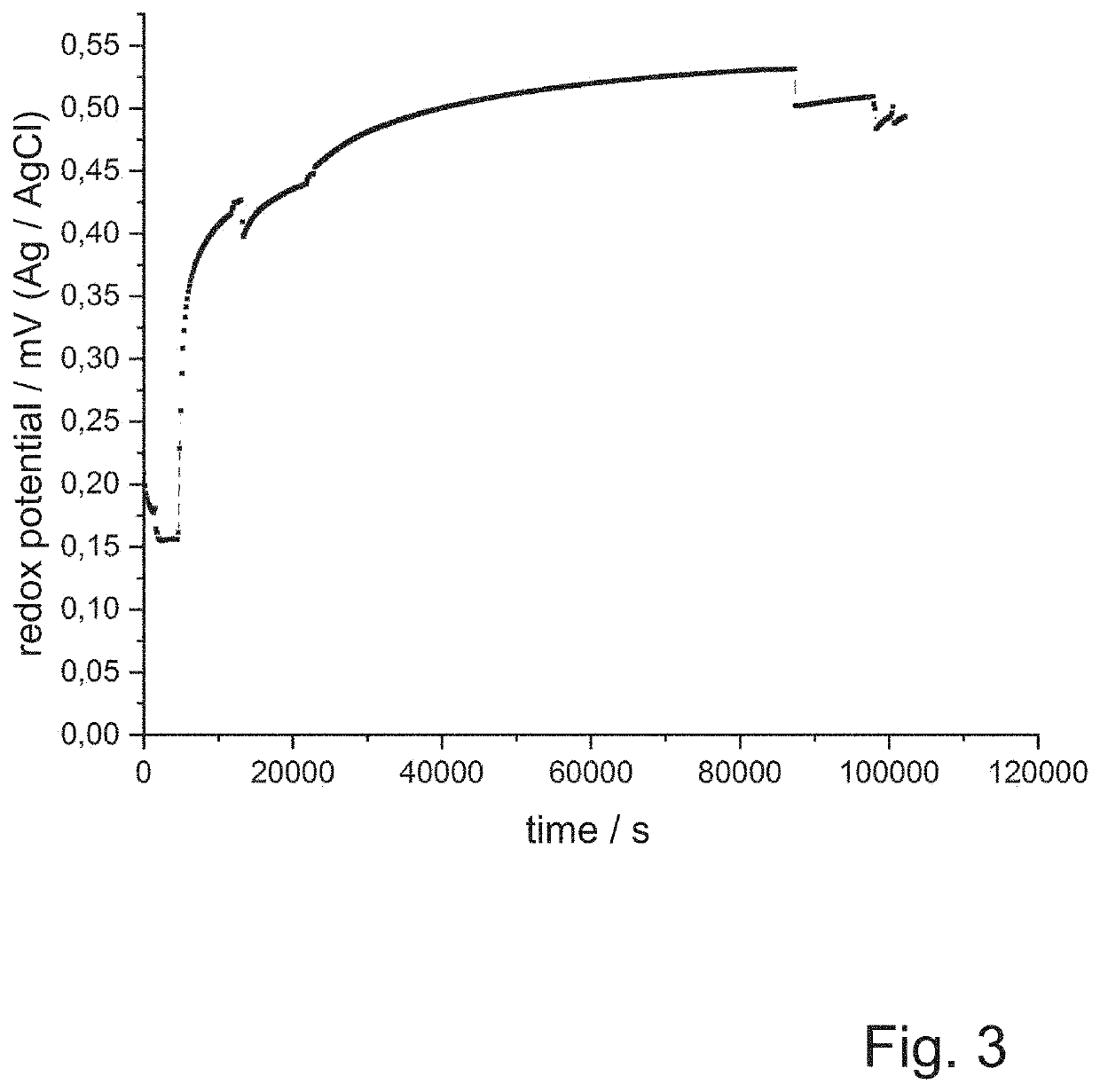Method for passivating metallic substances
a technology of metallic substances and passivating methods, which is applied in the direction of metal material coating processes, etc., can solve the problems of metal parts having to be replaced or repaired, considerable impairment of metal functions, environmental or technical systems, and expenditure of time, material and cos
- Summary
- Abstract
- Description
- Claims
- Application Information
AI Technical Summary
Benefits of technology
Problems solved by technology
Method used
Image
Examples
working examples
[0106]The inventive method for adjusting the optical properties or the redox potential of passivation compositions for the associated control of the properties of the resulting passivations is demonstrated below.
[0107]In the following experiments, acid or alkaline galvanized screws are used, which are galvanized at current densities of 1.5 A / dm2. However, the method according to the invention can be used with any other substrates, in particular steel sheets, or other zinc surfaces, such as parts coated by strip galvanizing or by coating with zinc alloys.
[0108]The exact sequence of galvanization and passivation processes is shown in Table 1.
TABLE 1Process sequence of electrogalvanization and passivationProcess stepNr.DescriptionDurationTemperature1Alkaline hot degreasing15min65° C.2Rinse30secRT3Rinse30secRT4Pickling HCl10minRT5Rinse30secRT6Rinse30secRT7Electrolytic degreasing4minRT8Rinse30secRT9Rinse30secRT10Acid dip with30secRT0.3% hydrochloric add11Acid galvanization or30min40° C. ...
example 1
[0109]A passivation solution according to example 3 of EP 2 907 894 A1 is used.
[0110]The passivation comprises the following composition:
Compoundwt.-%Chromium(III) sulphate72.2(solution in H2O, 20%)Sodium nitrate15.8Sodium hydrogen fluoride2.8Citric acid2.8Nitric acid2.2Sodium vanadate1.8Sodium molybdate0.8Water2.5
[0111]The passivation solution is produced from the concentrate by dilution with water and contains the concentrate in 10 wt. %.
[0112]The passivation is carried out on a laboratory scale in a beaker. Twenty screws are passivated in the passivation solution every day and then UV-VIS spectra of the passivation solution are recorded with a HACH LANGE phtometer. In addition, the passivations are evaluated optically.
[0113]It is shown that at the beginning of the test series the passivation solution has a blue coloration and also the produced passivation layers shimmer blue. After some time the passivation solution turns yellow and also the passivation layers get a yellowish tin...
example 2
[0115]A passivation composition according to example 3 of EP 2 907 894 A1, as described above, is used.
[0116]The passivation of the screws is carried out at room temperature in a laboratory galvanic unit with a bath size of approx. 30 liters.
[0117]The passivation composition is initially colored blue and also the first obtained passivation layers have a bluish color.
[0118]After thirty screws, a bath time of seventeen and a half hours, and after sixty screws, UV-VIS spectra of the passivation composition are recorded with a HACH LANGE photometer. In parallel, the redox potential is determined by means of a platinum electrode compared to a silver / silver chloride standard electrode. The results are shown in FIG. 2 and FIG. 3.
[0119]Even with the naked eye it can be seen that during the tests the passivation solution takes on a yellowish color and the passivation layers obtained also have a yellowish tint. This can be seen also from the UV-VIS spectra of the passivation solutions accordi...
PUM
| Property | Measurement | Unit |
|---|---|---|
| temperatures | aaaaa | aaaaa |
| thick | aaaaa | aaaaa |
| thickness | aaaaa | aaaaa |
Abstract
Description
Claims
Application Information
 Login to View More
Login to View More - R&D
- Intellectual Property
- Life Sciences
- Materials
- Tech Scout
- Unparalleled Data Quality
- Higher Quality Content
- 60% Fewer Hallucinations
Browse by: Latest US Patents, China's latest patents, Technical Efficacy Thesaurus, Application Domain, Technology Topic, Popular Technical Reports.
© 2025 PatSnap. All rights reserved.Legal|Privacy policy|Modern Slavery Act Transparency Statement|Sitemap|About US| Contact US: help@patsnap.com



